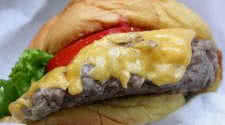Is a High Fat Diet Linked to Low Performance

Advanced Nutrition & Exercise Research
According to some people, high-fat, low-carbohydrate diets may be the most effective way to lose excess bodyfat and preserve muscle without resorting to drugs. This notion is most notably put forward by Mauro Di Pasquale, M.D., author of The Anabolic Diet. Other experts, however,
decry this type of nutrition program, pointing out that under high-intensity exercise conditions the body relies on carbs for fuel.
Glycogen is a type of carbohydrate that's stored in the liver and muscles and is the primary fuel for high-intensity exercise, such as weight training. Several recent studies show that towered muscle glycogen stores don't seem to hamper high-intensity training. Other studies show
that the body can adapt to using fat in greater quantities, thus sparing its limited supply of glycogen. For example, a study reported in the European Journal of Applied Physcology compared a high-fat diet to a high-carbohydrate diet in trained cyclists undergoing high-intensity
exercise. The high-fat diet contained 70 percent fat, an extremely high proportion, and 7 percent carbohydrate, while the high-carb diet reversed these percent ages, featuring 74 percent carbs and 12 percent fat.
The results showed that two weeks on a high-fat diet didn't impair the cyclists' ability to perform high-intensity exercise, and it also didn't affect their endurance. Previous studies that used rats as subjects came to similar conclusions. Scientists have advanced several theories
to explain how the body adapts to high-fat, low-carb regimens under intense exercise conditions: 1) The muscle begins to store more fat in the form of triglycerides); 2 there is increased activity of an enzyme in muscle known as carnitine-palmityl transferase, which facilitates
more efficient transport of fat into mitochondria for oxidation, or burning; 3) there is increased activity of two other enzymes, 3-hydroxyacyl-coenzyme A dehydrogenase and citrate synthase, which regulate the mitochondrial capacity to burn fat.
Another enzyme affected by a high-fat diet is muscle hexokinase, which is lowered. This reduces glucose uptake by muscle and increases tissue insulin resistance, both of which decrease carbohydrate oxidation in muscle in favor of fat. The authors of this study also note that the
high-fat diets were combined with a high-protein intake. This is significant because few people are aware that as much as 57 percent of excess protein intake can he converted to glucose and thus become a usable energy source during high-intensity exercise. A more recent study,
also involving trained cyclists, found that exercise endurance was unimpaired under high-fat conditions, although the proportions of carbs and fat in this study were not as drastic as were those used in the earlier research, In this case the subjects ate either a 60 percent carb,
20 percent fat diet or a 40 percent carb, 45 percent fat diet. After 12 weeks none of the 34 cyclists in the study reported excess fatigue on either diet regimen.
Do Protein Supplements Really Help Build Muscle?
German scientists tested whether taking protein supplements combined with a weight-training routine helped build muscle compared to just consuming carbohydrate supplements. The subjects consisted of two groups of 10 untrained young men who participated in a 12-week strength-training program. The subjects' average protein intake was 1.5 grams per kilogram of bodyweight, which is approximately the suggested dose for bodybuilding purposes. One group added one gram per kilogram of bodyweight in protein supplements. The other group consumed a carbohydrate supplement that contained the same number of calories. While both groups gained weight, only those taking the protein supplement gained weight while losing bodyfat. They also showed a slight superiority in muscle size gain compared to the carbohydrate group. This study is significant because the subjects involved were already consuming the recommended amount of protein suggested for bodybuilding purposes, yet they made even more gains when they added a protein supplement to their diets.Best Exercise Intensity for Fat Loss
Typical suggestions to maximize fat loss during exercise involve doing lower-intensity exercise for longer sessions. This advice is based on studies that show that as you exercise, your body gradually increases fat oxidation based on time; in short, the longer the session, the more fat is burned. As you increase intensity, your body must rely on more rapidly available energy-which means carbohydrates in the form of blood glucose and muscle glycogen. Scientists from the Human Performance Lab at Wayne State College in Wayne, Nebraska, decided to find the ideal intensity of exercise for fat burning. Their subjects consisted of four men and seven women, average age 26, who exercised at various intensities on both treadmills and stationary bicycles. Peak fat utilization during treadmill sessions was 42.5 percent of maximal oxygen consumption; for cycling it was 35.5 percent.These figures correspond to 69 percent and 60 percent of maximal heart rate. You can figure your maximal heart rate by subtracting 220 from your age. This study appears to confirm the idea that low-intensity exercise is best for maximal fat burning.